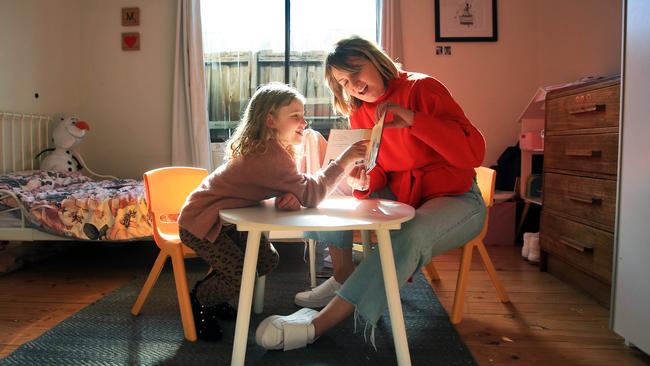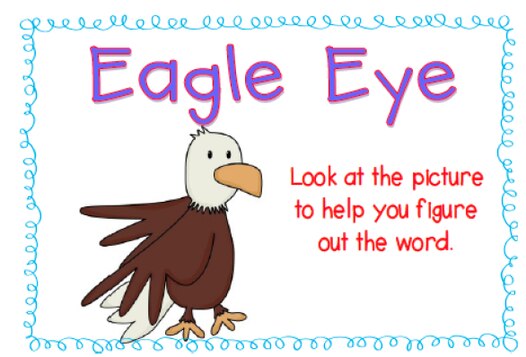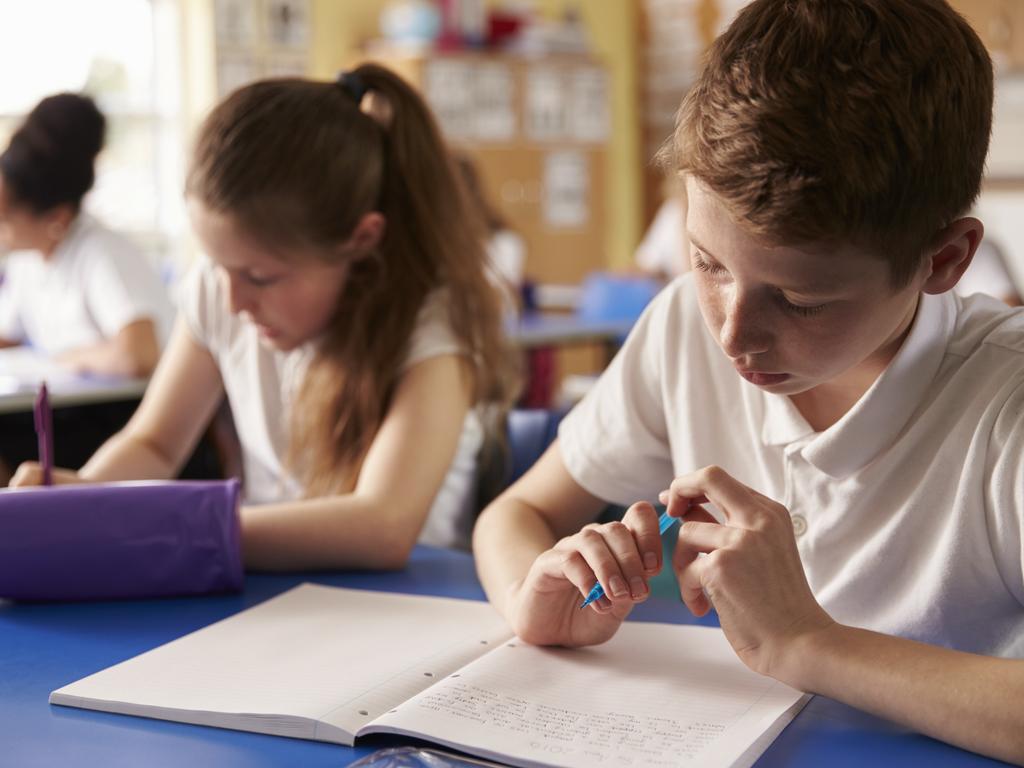Reading wars hit home during lockdown lessons
Phonics is hard for pupil and teacher, but it’s helping Margot.

“Dogs say ‘woof’, cats say ‘meow’, what does the letter ‘a’ say?”
And so it began. Perched at the dining table, armed with a 257-page guide on teaching a child to read, I was about to try to do just that. My daughter, Margot, had been at school for two months when the niggling concerns about her reading progress began.
Aged 5½, she could read and write her name independently, but not much else. Despite years of reading to her, singing songs and learning rhymes — many of which were learned by heart — she had difficulty identifying all the letters of the alphabet consistently, while her ability to link the letters with their various sounds was hit-and-miss.
Her teacher reassured me that she was where she was meant to be for a foundation-level student. Still, I was haunted by a conversation I’d once had with a prominent education academic who suggested all the journalists she knew had their children reading by the time they started school.
One evening, I sat down with my daughter to read one of the readers sent home from school and noticed how her eyes were automatically drawn to the pictures. It was hardly surprising; the images were obnoxiously large, overshadowing the much smaller text. As I suggested she point at each word and try to sound out each of the letters, she ignored me and started blurting out what she guessed they might be based on the image.
Frustrated by my gentle attempts at bringing her attention back to the words, she told me crossly that Eagle Eye was helping her to read.

As an education journalist, I know all about this Eagle Eye character who encourages children to guess an unfamiliar word by looking at the picture. Along with pals Lips the Fish (“get your lips ready to try the first sound”) and Skippy the Frog (“let’s skip that word altogether”), these child-friendly characters are a common feature of classrooms that adhere to the balanced literacy approach to reading instruction.
Balanced literacy emerged from whole-language reading instruction, spawned in the late 1960s, whereby children were expected to learn to read whole words naturally, merely as a result of plentiful exposure to books and writing. While balanced literacy concedes that children may need some guidance, it is based on a problematic theory called multi-cueing, also known as three-cueing, which surmises that a reader looks for meaning, structure and visual cues to help make sense of what is on the page.
Countless researchers from across the globe have dismissed multi-cueing as an ineffective system on which to base reading instruction lacking in any evidentiary basis. Yet cueing strategies are popular in many primary classrooms because children often experience some early success using picture cues and context to identify words, especially when aided by repetitive and predictable texts.
However, as Sir Jim Rose, whose landmark 2006 review of reading in the UK was key to the development of Britain’s Primary National Strategy for Reading, has pointed out, “children who routinely adopt alternative cues for reading unknown words, instead of learning to decode them, later find themselves stranded when texts become more demanding and meanings less predictable”.
Through my work I had written about many schools that had transformed their reading results and they typically shared one common feature: they had implemented a phonics program.
While the mere mention of the word phonics risks sparking an outbreak in the long-running reading wars, the debate has at least moved on from whether to teach phonics — the research says we should — to how it is best taught.
In Victoria, where I live, the Department of Education and Training promotes a balanced literacy approach to teaching reading, in which phonics is taught in ways deemed “meaningful to children”, such as reading books, having fun with rhymes and writing their own stories.
“Phonics instruction should take place within a meaningful, communicative, rich pedagogy, and within genuine literacy events,” the department’s Literacy Teaching Toolkit states.
With phonics in context, a typical lesson might involve the teacher reading with students and periodically stopping at a word to discuss the relationships between letters and sounds (known as phonemes). Occasionally there may be a lesson on a letter or sound, but they are not typically presented in a systematic, cumulative way.
In many other states, such as NSW and South Australia, public education authorities have endorsed a different approach called systematic synthetic phonics. Also known as “blended” phonics, it involves teaching a child about the individual letter-sound relationships first, then having the child combine or synthesise these sounds to form words. While learning to read successfully entails more that simply learning phonics skills — it also depends on the development of phonemic awareness, vocabulary, fluency and comprehension skills — major reviews of the teaching of reading in Australia, Britain and the US during the past 18 years have consistently identified phonics as a key component of an effective program.
The research also comes down on the side of synthetic phonics.
According to the NSW Education Department’s guide for schools on effective reading instruction: “There are a number of different approaches to teaching phonics, with varying levels of effectiveness. The most effective method is called synthetic phonics.” The document highlights results from a longitudinal study undertaken in Scotland that compared synthetic phonics with two analytic phonics programs.
At the end of these programs, children in the synthetic phonics group were reading around seven months ahead of children in the other two groups and were spelling eight to nine months ahead of the other groups.
Seven years on, those in the synthetic phonics group had extended their advantage further.
I was attracted to the simplicity at the core of the synthetic phonics approach; the way children were taught sequentially, starting out learning some simple letter-sound relationships, working towards the more complex end of the spectrum. For a parent with no teaching expertise, it seemed somewhat achievable. And with schools effectively set to close indefinitely because of the coronavirus pandemic, I finally had the time to help my daughter learn to read.
Having asked several literacy specialists and teachers what programs they rated, I settled on one devised by US author Stephen Parker called Teaching a Preschooler to Read (also suitable for primary schoolers). Parker, a retired teacher, has a knack for using plain language to explain a pretty technical topic. The guide, aimed specifically at parents, maps out clearly what to teach, when to teach it and how.
My first task was to refamiliarise myself with what is known in literacy circles as the alphabetic code. As Parker explains, the alphabet itself is only part of the code, with the 26 letters symbolising 44 different sounds. There are 20 vowel sounds (such as the short A in apple or axe but also the longer A in acorn) and 24 consonant sounds (B in bat and D in dad but also “th” and “sh” and the “ng” in king).
A list of those 44 phonemes was my constant companion during the coming weeks, and I swear I started to have nightmares about mixing up those short and long vowel sounds.
Stage one of the program kicked off with teaching my daughter the five short vowel sounds as well as M, N and S .
With a new Sharpie I wrote each letter on an index card and we practised saying the letters and their corresponding sounds every day. We also started to pay more attention to letters in our environment. Walking down the street, I’d point to the number plates on cars and ask Margot whether she could spot any of “her letters”, as we’d call them, and sound them out.
With her confidence growing, we moved on to decoding simple two and three-letter words. As with the letters, I wrote them on the index cards. To make a game, I had her flip them over and attempt to sound them out.
“A-n … An!” She got it on the first attempt.
I asked when she would use such a word.
“I would like an apple,” she replied. I was quietly impressed.
She moved on to the next word.
“M-a-n … Man.” Again no problem.
“N-a-n … Nan.” Ditto.
And that brought us to the word “sun”. She looked at it, then looked at me with a strained expression.
“Snake,” Margot said. I asked her to try again, this time concentrating on each letter. “Sam! S-s-s-sit!” She was becoming frantic, reeling off any word she could think of that started with S.
We were done for the day.
The next time we sat down to practise phonics I introduced her to the Decoding Dragon. The invention of Melbourne linguist and author Lyn Stone, the dragon’s job was to chase away those Guessing Monsters, including the hit-and-miss Eagle Eye.
While I was no fan of Eagle Eye, I decided to redeploy him. I told Margot that Eagle Eye had a new job and would help her focus on each of the letters as the Decoding Dragon would help her to sound them out.
Our little sessions continued. Some days were great. Others — quite a few actually — were a grind. Small children have very short attention spans and I learned my daughter has quite a stubborn streak. Overall, I could see a trend of improvement and a growing confidence. Each time she successfully sounded out a new word, I’d place the index card into her “special word box”.
“Look how many words are in your word box!” I said one morning. “I know,” she said, “I’m killing it.”
I made a decision early on to be upfront with the school about tackling phonics at home and my intention to replace the predictable readers for decodable books.
The teacher was receptive and supportive, going so far as to recommend several online apps for decodable readers, many of which were free as a result of the pandemic. However, concerned about the amount of screentime we were already having, I decided to purchase a hard-copy set. At $420 for 60 readers, they weren’t cheap but I felt it was a necessary investment.
One morning I took to Twitter and mentioned how excited I was that the readers had arrived in the post, only to see first hand how divisive their use is in literacy circles.
With titles such as Pat the Rat, The Pan and The Map, decodables are designed so a novice reader can practice reading the words they have already been explicitly taught.
“A pan sits!” mocked one teacher. “Fit rats. No thankyou.”
“Read to your daughter with ‘real-world’ words,” demanded another.
I won’t lie; I don’t particularly love the books. The language is basic and sometimes seems stilted. They won’t win any literary prizes. But they are not aimed at me — a proficient reader — but at a child, for whom deciphering the strange squiggles on the page is a hugely laborious task.
Further, they are merely a stepping stone along the path to becoming a reader
We’ve been at this caper for two months now and have just moved on to stage two of the program, which involves introducing the letters D, P, G and T. In the meantime Margot’s teachers, who have been doing an exceptional job teaching the children remotely, have introduced the digraph “th” as well as a bank of common English words such as the, is, was and my.
With school set to resume next week, I find myself reflecting on her progress. Can she read independently? Not even close; we are still very much at the start of this process. But I no longer feel that underlying sense of guilt about whether I could be doing more to help her out.
The word box is getting quite full and my daughter can now read many of them automatically. At night, when I read her a bedtime story, she will stop me to point out words she knows.
The other day I told her she was starting to read like a grown up.
“I know,” she replied, “The Decoding Dragon has been helping me.”
RESOURCES FOR PARENTS
Five from Five. Public education initiative promoting effective, evidence-based reading instruction. Includes resources for parents. https://fivefromfive.com.au/
Parker Phonics. Free guides on teaching synthetic phonics for teachers and parents https://www.parkerphonics.com/
The Snow Report. Blog by La Trobe University’s Professor Pamela Snow, an outspoken advocate for evidence-supported practice.
http://pamelasnow.blogspot.com/
Reading For Life, by Lyn Stone. An unabashed but accessible look at teaching methods for reading and writing and why some ideas prevail despite a lack of evidence.
https://lifelongliteracy.com/
Spelfabet. Founded by speech pathologist Alison Clarke. Website includes some free resources for parents. https://www.spelfabet.com.au/
Fitzroy Readers, phonics books, apps and support materials https://www.fitzprog.com.au/
Effective Reading Instruction in the Early Years of School, literature review released by the NSW Centre for Education statistics and Evaluation, https://www.cese.nsw.gov.au/




To join the conversation, please log in. Don't have an account? Register
Join the conversation, you are commenting as Logout